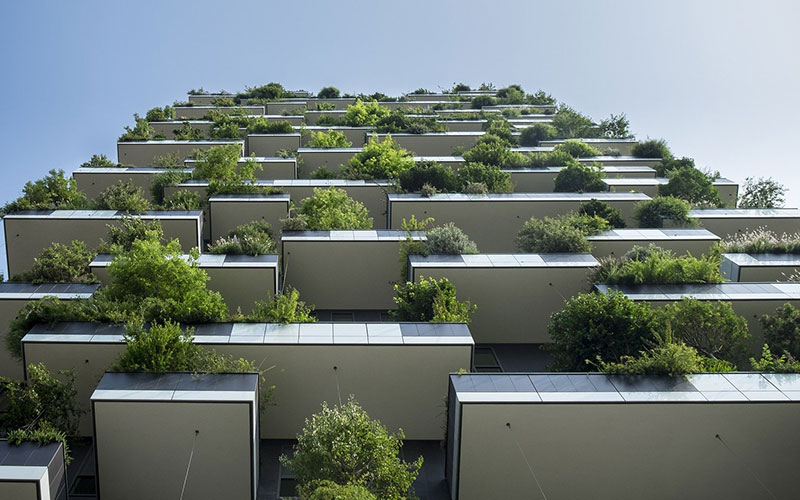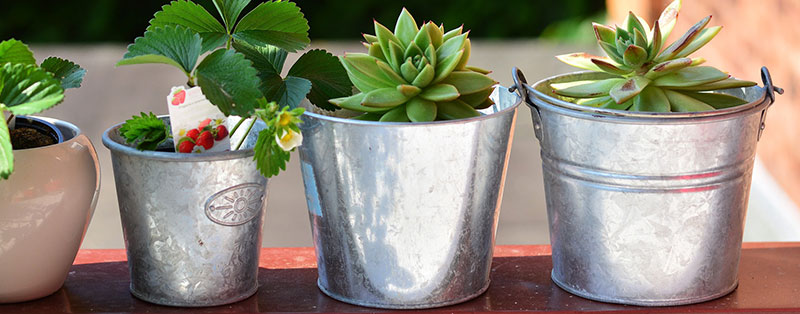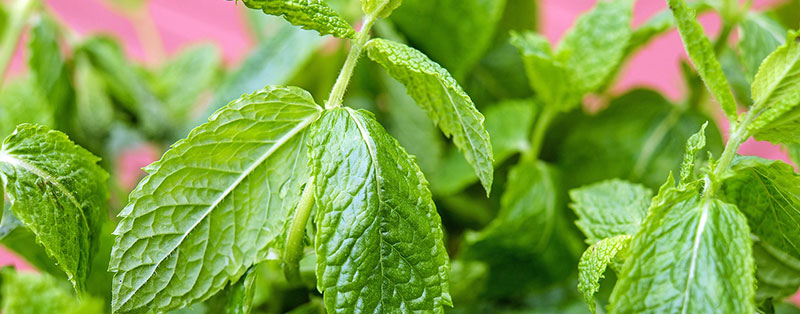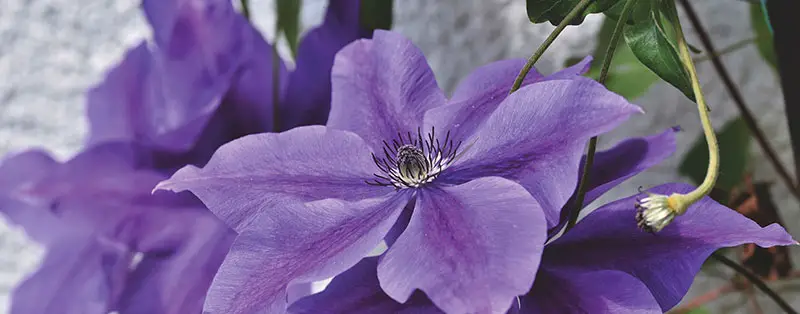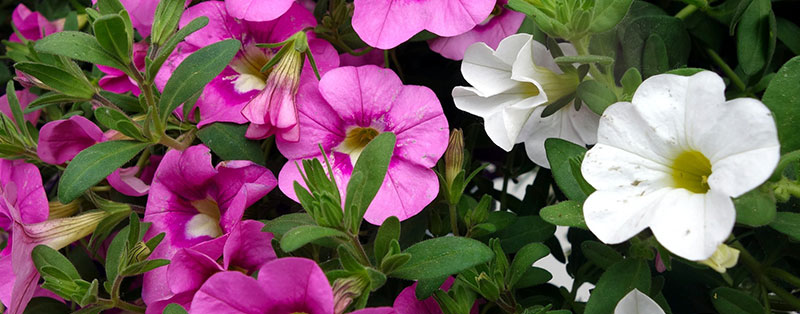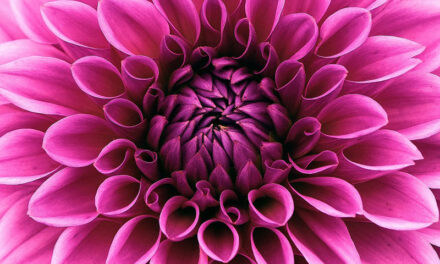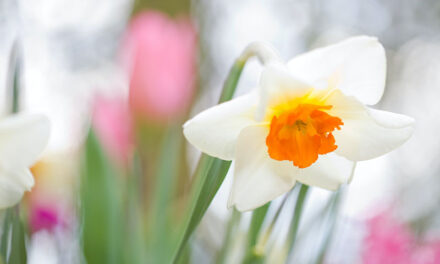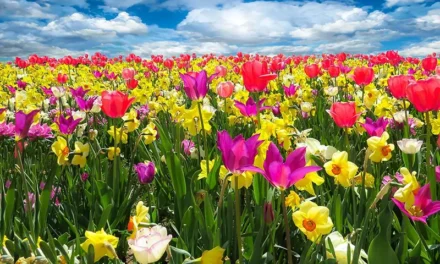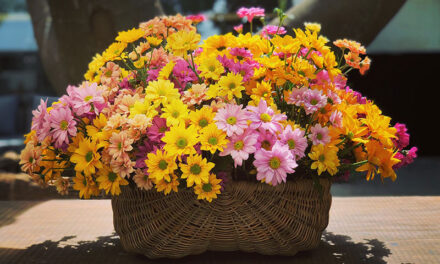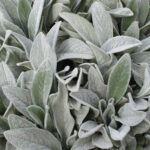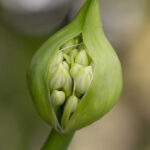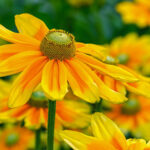Do you have a balcony? Yes? Lucky you! With just a few steps, you can enjoy the fresh air. Of course, plants are a must-have for a balcony: they instantly create a cozy atmosphere. Whether your balcony is in the warmer south or the cooler north, there are suitable balcony plants for every situation. Curious about which plants will thrive on your balcony? Keep reading!
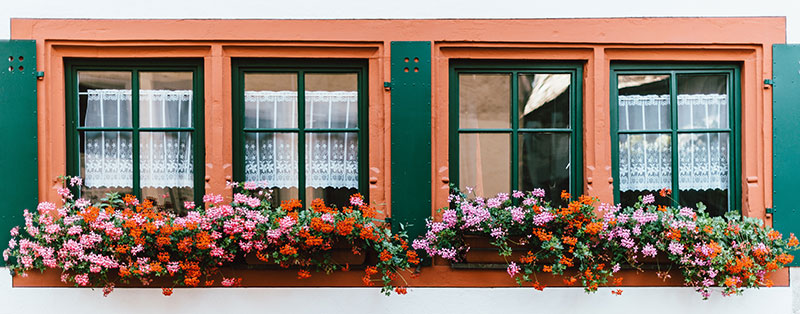
Balcony Flower Boxes
Balcony plants brighten up your balcony, and a lovely flower box certainly helps. Flower boxes come in various sizes, shapes, and a plethora of colors. For a peaceful look, you can choose flower boxes in different shades of the same color. If you prefer something more playful, go for a mix of vibrant colors.
On a smaller balcony, floor space can quickly become limited, but there’s a solution: special balcony planters. You can easily hang them on the railing of your balcony. Fill them with eye-catching flowers and plants, and your balcony garden will be a real showstopper!
Balcony plants
With flowers and balcony plants in pots and containers, you can create your own little garden even on the smallest balcony. The possibilities are endless, from annual summer bloomers to perennial plants, from shrubs to small trees, and from traditional geraniums to an olive tree. Provide them with potting soil, water, and loving care, and you’ll be rewarded with a delightful fragrant and colorful garden.
Plants for Full Sun Balconies
While most plants enjoy the sun, prolonged summer sun can be scorching. If your balcony faces south, consider choosing container plants. Container plants are originally from tropical or subtropical regions. They also thrive well in the Netherlands, as long as they are moved to a frost-free spot after autumn.
Examples of container plants include:
- Oleander
- Lantana
- Bougainvillea
- Lemon trees
- Orange trees
- Olive trees
Cacti, succulents, and geraniums also thrive on a south-facing balcony. Don’t forget to water your balcony plants regularly. Note that water evaporates faster from terracotta pots than from plastic pots.
Plants for East-Facing Balconies
With an east-facing balcony, your plants will enjoy weather conditions without extreme elements. This opens up many possibilities for pots and containers, such as:
- Foxglove
- Ly’s mantle
- Japanese maple
- Ornamental grasses
- Heuchera
- Hosta
- Begonia
- Busy Lizzie
- Pansy
- Marigold
- Lobelia
- Daisy
During the winter months, balcony plants on east-facing balconies can benefit from some protection against the cold east wind.
Climbing Plants for Balconies
Climbing plants can create a sheltered corner for privacy on your balcony, either on their own or with a little support. Moreover, a wall adorned with a flowering climbing plant has a completely different look than a bare wall. Good climbers suitable for balconies include:
- Climbing hydrangea: It takes some time for the hydrangea to cover the entire wall, but then you can enjoy its dark green leaves and beautiful white flowers.
- Clematis: A fast-growing climber available in a wide range of colors.
- Star jasmine: Delightfully fragrant in summer and evergreen in winter.
- Passionflower: There are over 500 species, with the winter-hardy Caerulea being the most well-known.
- Honeysuckle: Delightfully fragrant and blooms until September.
Wind-resistant balcony plants
If your balcony is often exposed to strong winds, it’s important to choose plants that can withstand these conditions. Wind-resistant balcony plants include:
- Catmint
- Feather reed grass
- Lavender
- Rockcress
- Globe thistle
- Star of Bethlehem
- Hawthorn
- Brachyglottis
- Crane’s-bill
- Feather grass
Marram grass on the balcony
Marram grass, like most ornamental grasses, is most beautiful in autumn. This ornamental grass can be combined beautifully with other balcony plants but also has a calming presence on its own. Marram grass requires little maintenance while providing visual interest throughout the year. This hardy plant thrives in partial shade.
Japanese maple on the balcony
The Japanese maple is a slow-growing tree, allowing you to enjoy it on your balcony for a long time. The leaves display their most vibrant colors when the tree is placed in a sheltered spot with partial shade. The leaves remain brownish-red throughout the year but turn deep red in autumn. The tree is winter-hardy, but it’s important to avoid keeping the root ball excessively wet during winter to prevent damage.
Mint on the balcony
Mint is a delightful plant to have on your balcony. It repels flies and mosquitoes and is perfect for making refreshing summer cocktails like Mojitos! Mint thrives in sunny or partially shaded spots and requires regular watering. Green mint is the most common variety, but you can also consider other types such as field mint, woolly mint, and water mint. Mint grows rapidly, so it’s important to keep it in check.
Butterfly bush on the balcony
A butterfly bush is a striking addition to any balcony. The flower clusters, ranging from 10 to 30 cm in length, come in deep purple, lilac, blue, pink, or white. These colors, along with the fragrant blossoms, attract honey bees and butterflies. The bush blooms from late summer onwards. You can find large butterfly bush varieties, but there are also smaller ones that are perfect for a sunny spot on a balcony.
Balcony flowers
If your balcony is too small for large flowering plants, bulbs can be a great alternative. Bulbs require minimal root space, making them suitable for growing in pots. You can choose from tulips, hyacinths, daffodils, snowdrops, or cyclamen, for example.
Clematis on the balcony
Clematis is a climbing plant that can be planted in both the ground and pots, making it suitable for balconies. There are numerous varieties of clematis available, with different blooming periods and colors. For a balcony, choose one of the smaller varieties, as clematis can grow quite large. The plant prefers a sunny spot near a wall or trellis for support. Clematis requires ample water, especially during the summer.
Oleander on the balcony
Oleander thrives in a sheltered spot protected from heavy rain and wind, making it an excellent focal point for your balcony. A sunny location ensures abundant blooming, with flowers ranging from red and light pink to pale yellow and white. In case of approaching frost, the oleander should be moved indoors.
Winter flowers on the balcony
To prevent your balcony from looking dull and empty during the winter months, you can add some winter-flowering plants. The following perennial plants will provide enjoyment year after year:
- Hellebore, with pink and white flowers in winter
- Camellia, a plant that blooms in response to frost
- Winter heather, blooming until April
- Viburnum, an evergreen shrub
- Skimmia, which develops buds and berries in late summer and blooms with a delightful fragrance in spring
Hanging plants for the balcony
Hanging plants add charm to your balcony without taking up much space. Colorful varieties that can be easily hung on hooks or the balcony railing include:
- Aubrieta
- Trailing petunia
- Trailing begonia
- Trailing lobelia
Some hardy options for hanging plants are:
- Ivy
- Wisteria
- Clematis
- Creeping bellflower
- String of hearts
- Virginia creeper
- Bacopa
Balcony vegetable garden
If you’d like to have a vegetable garden on your balcony, you can hang sacks or containers on the railing or use wooden boxes placed on the ground. Then, with pots, seedlings, potting soil, vegetable fertilizer, herb and vegetable plant food, gloves, a trowel, and a watering can, you can start your balcony gardening journey. In no time, you’ll be able to enjoy your home-grown tomatoes, potatoes, herbs, peas, snow peas, sugar snap peas, lettuce, turnip greens, zucchini, scallions, peppers, bell peppers, strawberries, and more.
Balcony greenhouse
Would you like to grow vegetables and herbs in a greenhouse on your balcony? You can do so with a special balcony greenhouse, also known as a patio greenhouse. It’s a small and practical greenhouse with a back wall, making it easy to move around. The greenhouse is equipped with a venting window to regulate the temperature, and shelves allow for cultivation at multiple levels.
Collecting rainwater on the balcony
Rainwater, although sometimes inconvenient, is essential for plants. By collecting rainwater and using it to water your plants later, you’re not only benefiting the environment but also saving money. There are various ways to collect rainwater, from placing buckets and watering cans to connecting a specialized rain barrel. Rain barrels come in different models. Wooden barrels are more susceptible to damage from freezing temperatures and weathering compared to plastic barrels, which are a more sustainable choice, especially if made from recyclable materials.
Composting on the balcony
With a worm bin, you can easily make compost on your balcony. Simply throw your kitchen or garden waste into a plastic bin, and the red worms will do the rest, converting the waste into nutrient-rich compost for your balcony plants. An alternative method is using a Bokashi bucket. In this bucket, your kitchen and garden waste undergo fermentation, transforming it into valuable compost. Along the way, you can collect the liquid that’s released and use it as a liquid fertilizer for your plants.
I hope you find this information helpful for creating a beautiful and thriving balcony garden! Let me know if you have any other questions.

